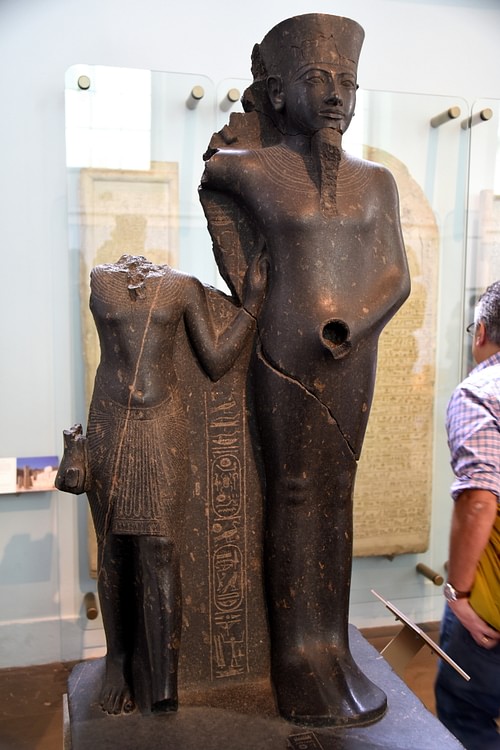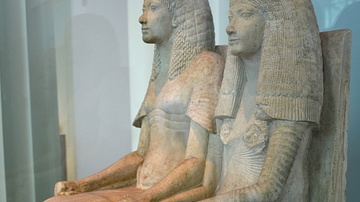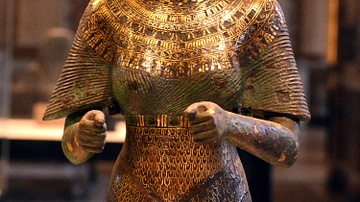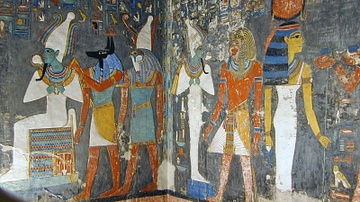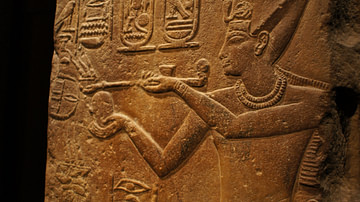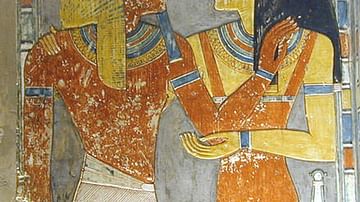Illustration
The inscriptions identify the headless king as Horemheb and the larger god as Amnu-Ra, here shown in his fertility aspect. The deity's phallus, now lost, was made separately. The statue was perhaps usurped from Tutankhamun, whose short reign had mostly been steered by Horemheb as regent and commander-in-chief. Numerous temple statues, particularly of Amun-Ram, were made at this time to replace those destroyed during the iconoclasm of Akhenaten's reign. 18th Dynasty, reign of Horemheb, circa 1323-1295 BCE, possibly usurped from Tutankhamun (circa 1336-1327 BCE). Probably from the temple of Amun-Ra at Thebes, Karnak, Egypt. (The British Museum, London).
Cite This Work
APA Style
Amin, O. S. M. (2016, July 22). King Horemheb with Amun-Ra. World History Encyclopedia. Retrieved from https://www.worldhistory.org/image/5326/king-horemheb-with-amun-ra/
Chicago Style
Amin, Osama Shukir Muhammed. "King Horemheb with Amun-Ra." World History Encyclopedia. Last modified July 22, 2016. https://www.worldhistory.org/image/5326/king-horemheb-with-amun-ra/.
MLA Style
Amin, Osama Shukir Muhammed. "King Horemheb with Amun-Ra." World History Encyclopedia. World History Encyclopedia, 22 Jul 2016. Web. 17 Apr 2024.
